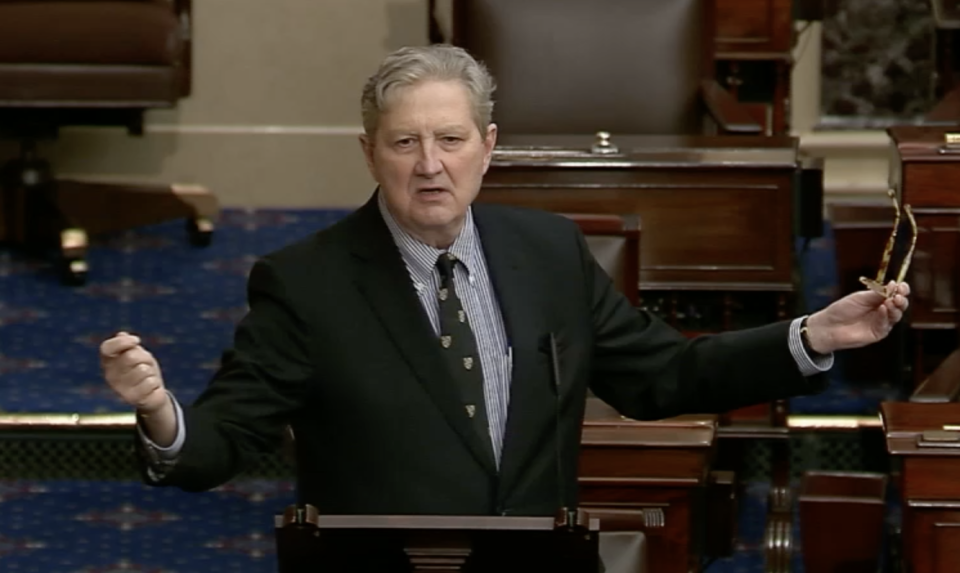
Houma suspect ‘major player’ in $1M meth haul
September 16, 2014Thibodaux chamber to host election candidates
September 16, 2014With 86 percent of hurricanes that hit Louisiana passing through Plaquemines Parish first, Billy Nungesser calls his parish a speed bump.
Addressing the Lafourche Parish Council last Tuesday, Plaquemines Parish President Nungesser provided an update on his parish’s coastal plan – one that could not only make surrounding parishes safer but one they could emulate.
Nungesser said in the aftermath of Hurricane Katrina, his staff took a look at all 34 coastal projects being implemented in the parish and found that even if all of them could be built overnight they would lower storm surge to Plaquemines Parish by less than a foot.
Something had to change.
That’s when Nungesser and company came across a plan that was “scary good.”
“We took the first phase of our plan, which is a forested ridge, and we ran the same storm surge models. It showed it would lover storm surge eight-to-one over an area of marsh grass,” Nungesser said. “We ran those models working with the [U.S. Army Corps of Engineers] and a lady with the corps made the comment this is ‘scary good.’”
The idea behind a forested ridge is that a forested tree line in front of a levee would knock a five-foot wave down to less than a foot. That way waves can be greatly reduced before they even reach a levee, lowering storm surge.
Nungesser said when a forested ridge is built in front of the levee in Venice, hurricane protection will go from 50-year levels to near 100-year levels without even touching the levee.
“As we build these barrier islands and ridges and lower storm surges to our existing levees, we’re going to get better flood rates on our insurance and better protection without having to continue to go back and raise the levees,” Nungesser said. “ … We’re doing that with $3 sand out of the [Mississippi] River as opposed to $50 clay raising our levees.”
With models showing plans to deepen the Mississippi River to increase trade, adequate sand will be available at a reasonable price.
Although Lafourche Parish doesn’t have many of the limited levee-raising space issues Plaquemines has because in order to raise a levee you must also widen it, Lafourche Parish President Charlotte Randolph said Lafourche is also exploring forestry ridges.
“Forestry ridges are the best obstacles to storm surge, and the Greater Lafourche Port Commission is developing one right now,” Randolph said. “It used to be with the major oak trees in the past, there used to be a way to stem that surge, but, of course, with the loss of the coast we’ve had to revert to levees and things like that.”
Greater Lafourche Port Commission Executive Director Chett Chiasson said the ridge is located just north of Port Fourchon and is being built at plus-8 elevation in the center and tapered down to marsh elevation on the sides.
Chiasson said half of the 12,000-layer sheet has been completed so far, and more materials are being added as they are received. He expects the upcoming major expansion project of Slip D in Port Fourchon to provide more materials within the next three years.
“I think it’s a good project that the Port Commission started many years ago, and when it’s all said and done is going to be something we would anticipate that the public will be able to access it and actually go out and have walking trails and bird watches and those sort of things. It may be eight or 10 years down the road, but sooner or later we anticipate the public having access to it,” Chiasson said.
But even forested ridges outside the parish can help Lafourche and other nearby parishes, according to Nungesser.
“What we did learn after bringing in new consultants and Dr. [Joseph] Suhayda is that if we turn those ridges out from the levee, we would lower storm surge to our neighboring parishes as well, so we get more bang for our buck and we lower our storm surge to neighboring parishes,” Nungesser said.
However, Nungesser and his advisors had a difficult time getting national leaders to accept the effects of its forested ridges and therefore receive national funding for them.
“When [Craig Fugate] got appointed [as the Federal Emergency Management Agency’s administrator], we went back [to Washington, D.C.,] and we went back and we went back. I told him, ‘You’re going to be tired of seeing me until you give me something that says you will recognize these berms and ridges as flood protection.’”
After five years of insisting, Fugate sent a letter to Congress confirming the positive effects of forested ridges versus storm surge.
“So, when he went this letter to Congress, we were celebrating in Plaquemines Parish,” Nungesser said.
After coming to a parish-wide agreement with the U.S. Army Corps of Engineers for 65 percent federal funding and 35 percent local funding, Plaquemines just finished its pre-bid meeting with dredge companies and will be receiving bids over the next month to add more forested ridges.
Other parishes and areas may soon follow suit.
Plaquemines Parish President Billy Nungesser said the diagramed forrested ridge can nearly double storm surge protection of the levee behind it without even touching the levee.










